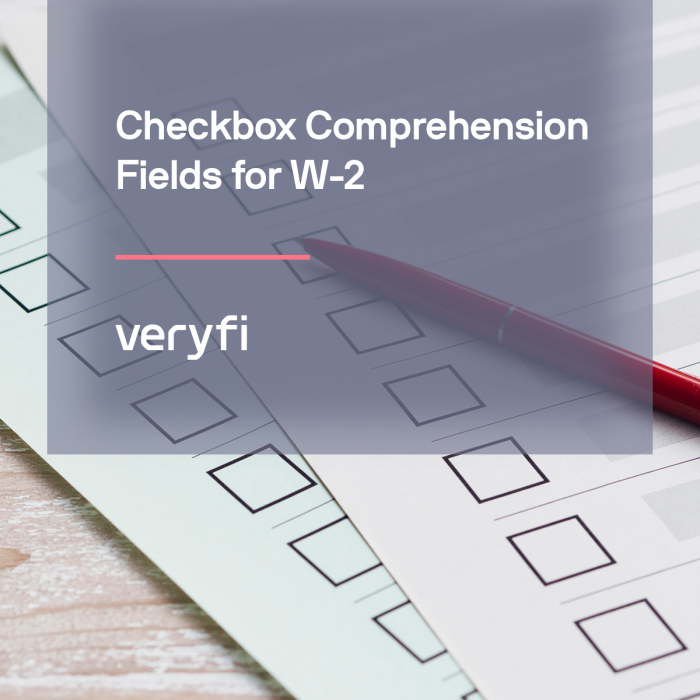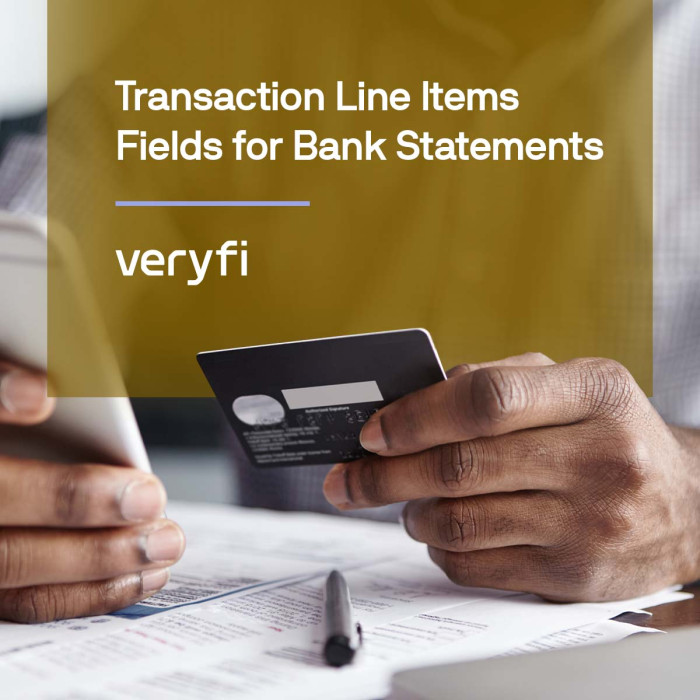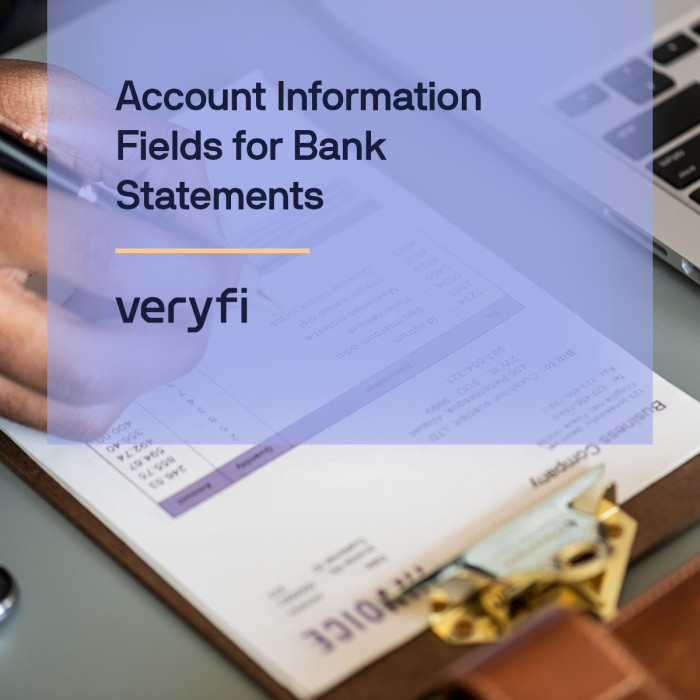The fields listed on the supported fields page are readily available and fully functional from day one. These fields encompass a robust collection of data points with versatile applications, allowing your organization to gain valuable insights regarding expenditure, taxation, shipping, currency, and financial reconciliation.
Some examples of these financial fields include:
- Subtotal
- Discount
- Cashback
- Shipping cost
- Tax (VAT, GST)
- Tax Lines
- Tip
- Total
- Rounding
- Currency Code
- Currency Exchange Rate
- Insurance
- Incoterms
- Balance (current / previous)
Use Cases for Financial Fields
Here’s a brief run down of how you can use these financial fields either in your app to take advantage of the wealth of data Veryfi OCR API provides.
| Field | Description | Insights & Intelligence | Application Type |
|---|---|---|---|
| Subtotal | Total cost before discounts and taxes | Analyze spending patterns, compare prices, evaluate discount effectiveness | Expense management, budgeting |
| Discount | Amount deducted from the subtotal | Identify cost savings, assess the impact of discounts | Expense management, budgeting |
| Cashback | Amount received as cashback or rewards | Evaluate benefits of cashback programs, assess overall savings | Expense management, rewards |
| Shipping cost | Cost associated with shipping | Assess shipping expenses, identify cost-saving opportunities | Expense management, logistics |
| Tax (VAT, GST) | Taxes applied to the transaction | Calculate tax liabilities, ensure tax compliance | Tax planning, compliance |
| Tax Lines | Itemized tax details | Understand tax breakdown, identify tax discrepancies | Tax planning, compliance |
| Tip | Additional amount paid as a tip | Analyze tipping habits, evaluate service quality | Expense management, tipping |
| Total | Final cost including all charges | Track overall expenses, evaluate financial impact | Expense management, budgeting |
| Rounding | Amount rounded off during payment | Identify rounding errors, track payment accuracy | Expense management, reconciliation |
| Currency Code | Code representing the currency used | Analyze international transactions, monitor currency fluctuations | International finance, travel |
| Currency Exchange Rate | Rate used for currency conversion | Assess impact of exchange rates, calculate accurate costs | International finance, travel |
| Insurance | Cost associated with insurance | Evaluate insurance expenses, assess coverage options | Expense management, risk management |
| Incoterms | Trade terms for international transactions | Understand terms of shipment, assess costs and responsibilities | International trade |
| Balance (current/previous) | Current or previous balance | Track financial health, reconcile payments and balances | Financial management, reconciliation |
Let’s dig in deeper…
With access to standardized data from invoices and receipts within your organization, you can uncover several insights and gain valuable intelligence. Here are a few more examples:
- Spending patterns: By analyzing the subtotal, discount, cashback, and total values, you can identify trends in your spending habits, such as frequent discounts or cashback opportunities, and understand how much you’re actually paying for various items or services.
- Tax analysis: The tax-related data, including tax lines, VAT, GST, and currency exchange rates, can help you calculate and compare taxes across different invoices or receipts. This analysis can be useful for tax planning, identifying discrepancies, or ensuring compliance.
- Shipping and insurance costs: By examining the shipping cost and insurance charges, you can evaluate the expenses associated with delivering goods or services. This information can be helpful in assessing shipping alternatives, negotiating better rates, or identifying cost-saving opportunities.
- Financial reconciliation: The balance (current/previous) can be used to reconcile your financial records, ensuring that the payments, discounts, taxes, and other charges match the amounts mentioned in the invoices or receipts. This helps in tracking your financial health and identifying any discrepancies.
- Currency analysis: The currency code and exchange rate data allow you to analyze international transactions, monitor currency fluctuations, and assess the impact of exchange rates on your expenses or revenue. This information is particularly relevant if you conduct business across different currencies or if you frequently travel abroad.
- Tip and rounding analysis: By examining tips and rounding amounts, you can understand the tipping habits or practices associated with different transactions. This information may be useful for budgeting, determining appropriate tipping amounts, or detecting any rounding errors.
- Supplier analysis: By examining the invoices, you can identify your primary suppliers, assess the frequency and volume of transactions with each supplier, and analyze the costs associated with different suppliers. This analysis can help you negotiate better deals, identify potential cost-saving opportunities, or assess supplier performance.
- Inventory management: If the invoices or receipts include itemized details, such as product names or codes, you can use this information to track inventory levels, analyze stock movements, and optimize inventory management. This can help in identifying popular products, forecasting demand, and avoiding stockouts or overstocking.
- Expense categorization: By categorizing expenses based on the invoice or receipt data, you can gain a better understanding of your spending across different categories (e.g., utilities, travel, office supplies). This analysis can assist in budgeting, identifying cost-saving areas, or evaluating the effectiveness of cost control measures.
- Cash flow analysis: By considering the balance (current/previous) and payment terms mentioned in the invoices, you can analyze your cash flow patterns. This can help in managing working capital, understanding cash flow fluctuations, and identifying potential cash flow issues or opportunities.
- Fraud detection: Analyzing the invoice and receipt data can also help in identifying any suspicious or fraudulent activities. By comparing transaction details, amounts, or patterns, you can spot inconsistencies or irregularities that may indicate fraudulent behavior.
- Customer behavior analysis: If the invoices or receipts include customer information, you can analyze customer spending patterns, preferences, or loyalty. This analysis can help in developing targeted marketing strategies, improving customer service, or identifying valuable customer segments.
Are your creative gears turning yet?
Consider this your catalyst for developing awe-inspiring apps and tools that will captivate customers and leave them smitten.
In the words of Deloitte, “Data is the new gold.” Embrace the future with Veryfi and position yourself for unparalleled success. Unleash the power of data and embark on a journey of limitless possibilities. Let your imagination soar and forge a path to greatness with Veryfi by your side.










